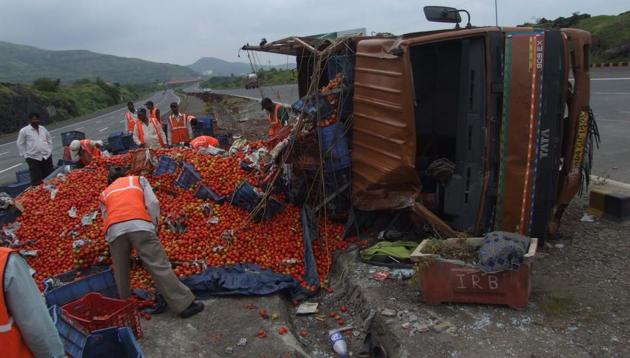How can the Pune-Mumbai Expressway be safe?
Various studies conducted by government and non-government agencies have shown that “human error” mostly negligent driving is the main reason for accidents on the expressway.
The 94 km Pune-Mumbai expressway, with three lanes in each direction is famous as the country’s first expressway that became operational in the year 2000. Since then, the highway police which monitors traffic on the expressway has recorded 14,000 accidents with more than 1,500 deaths.

Why should the number of accidents and fatalities be high on a world-class road that is well maintained, offering three lanes each towards Mumbai and Pune?
Various studies conducted by government and non-government agencies have shown that “human error” – mostly negligent driving – is the main reason for accidents on the expressway. Drivers ramming their vehicles into other vehicle at high speed, wrong over-taking and losing control over vehicles after feeling drowsy and fatigued are among the main reasons for the accidents. Monotous driving, wrong turns, lane cutting and overspeeding are among the other reasons for the accidents.

Highway police data from 2006 to 2014 has revealed that majority of the accidents have taken place during the wee hours of the morning. Highway police have studied data of 14,186 accidents, which took place in an eight year period. The study found that around 2,000 mishaps took place due to mechanical fault. “The driver must stop driving if he is feeling sleepy or fatigued”, a senior MSRDC official said while speaking to Hindustan Times, pointing out that fatigue reduces the driver’s ability to concentrate on driving.
In sharp contrast is the use of technology on the 30km stretch connecting Delhi to the Yamuna Expressway and the 205 km Delhi to Agra Yamuna Expressway. Motorists on this high-speed road are extremely careful about over-speeding because they fear that they would be hauled up by the police at the next stop if found to be over-speeding by the Intelligent Traffic Management System (ITMS).
This system has 132 CCTV cameras connected with WiFi connectivity and large LED dispaly boards. CCTV is installed on every one km stretch; and on the Delhi-Agra highway, at every five km. This has worked.
Drivers are unwilling to cross speed limits or disregard any traffic rules because of heavy on-the-spot fines. The CCTV cameras, installed at every one km, has the height of 14 metres to detect the movement up to a distance of 280 metres. “Even in the middle of the night, even when there is sparse traffic on the highway, no one dares to cross the maximum speed limit of 80 kmph because one is sure to get caught at the next police check-post,” said Ishan Sadanand, a student, travelling towards Agra with his friends.
Compare this with the routine over-speeding on the Pune-Mumbai expressway. It is common experience that slowest car runs at the maximum speed limit of 80kmph. On most occasions, there is no police presence to check speed limits and once in a while, the police are seen using speed guns to monitor speed of passing vehicles.
According to Janardhan Patil, Assistant Police Inspector at the expressway control room, the traffic police have four teams of spotters who travel by a private vehicle and communicate vehicle number to police squad on wirelsess or through cell phone. The fine is collected from speed violators by a team standing near the toll plaza. Often, violators are seen arguing with the police and asking for evidence.
Fine for lane crossing and over-speeding is barely Rs 200 and for rash driving, drivers are charged Rs 1000. Speed guns are used when police undertake any special drive. Maharashtra State Road Development Corporation (MSRDC) has no immediate plans to upgrade its current system to bring down traffic violations.
The installation of the Intelligent Traffic Management System on the lines of the Yamuna Expressway would go a long way in improving safety standards on the Pune-Mumbai route.




